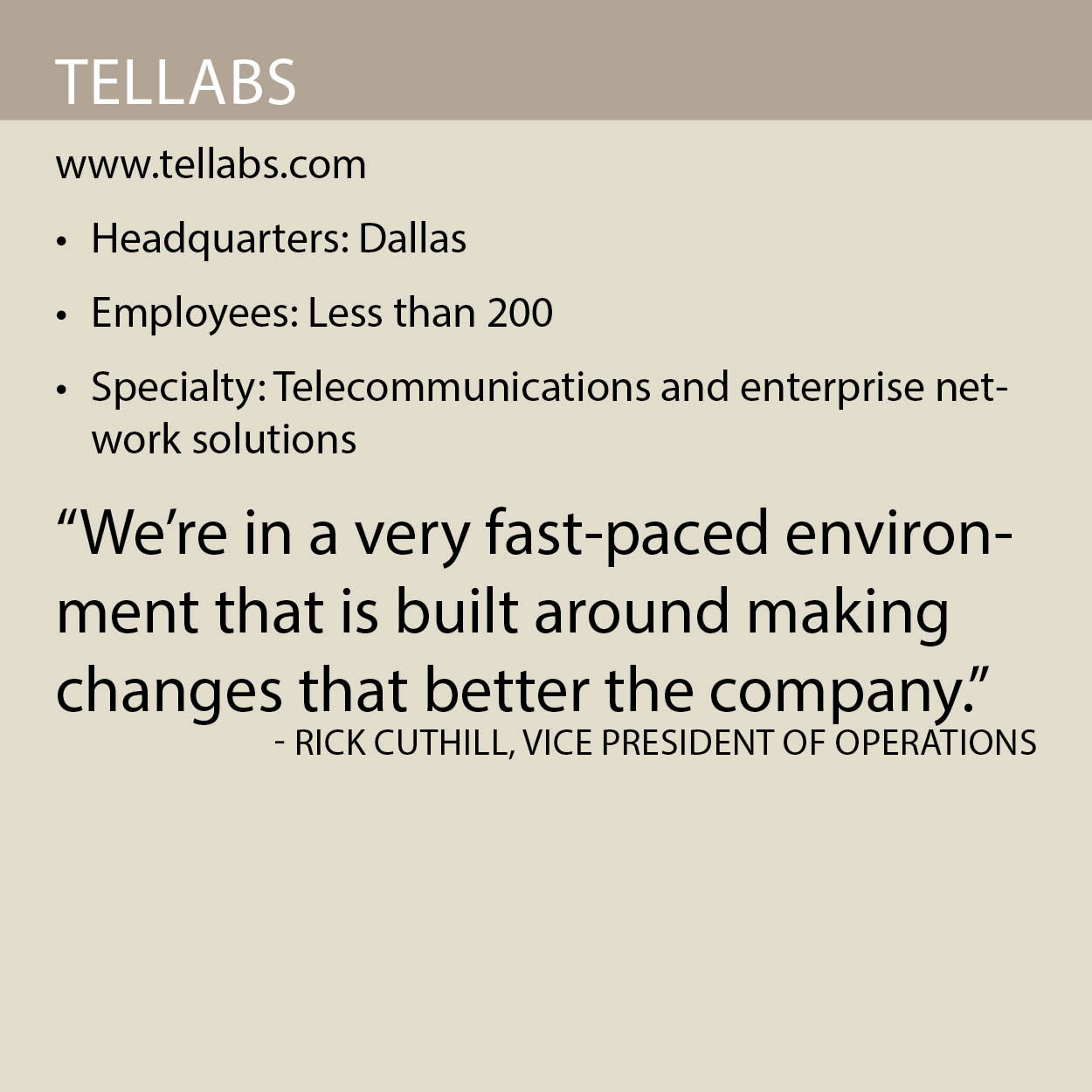Tellabs
Tellabs’ recent restructuring spurred the company to reexamine its entire supply chain philosophy.
By Jim Harris
Tellabs in the past few years has seen significant changes to its operations. Established in 1975, the company grew over the course of the next three decades to become a global leader in telecommunications. In 2013, a private equity firm acquired Tellabs, which at the time was a publicly traded company.
The following year, Tellabs╒ enterprise and telecommunications portfolios ╨ two of the company╒s key portfolios ╨╩were spun off into a new company under the legacy name.
This change brought with it opportunities as well as significant challenges for its supply chain operations. “We are operating like a startup, but we╒re a company that was encumbered by in disparate legacy systems,” says Dave Cunningham, director of global marketing for the Dallas.-headquartered company.

Tellabs’ enterprise business supplies optical local area network (LAN) equipment and services to customers. Optical LANs are faster, more efficient, scalable and adaptable than traditional copper-based networks, Cunningham says. The company also services traditional telecommunications infrastructure for large companies including AT&T and Verizon, as well as independent local exchange carriers (ILEC).
A New Infrastructure
The company╒s structural changes led it to transform the way it communicates with the vendors to which it outsources manufacturing, commodity management and third-party logistics (3PL) services.
“Two years ago, we had a fragmented horizontal supply chain model,” Senior Manager of Global Operations Lane Soto says. “We designed and maintained test equipment at the manufacturing sites, owned most raw materials and various other capitalized assets needed to support our outsourcing model. Additionally, our vendors were using multiple business systems to support our business, which resulted in our supply team being heavily involved in their processes. We also supplied on site personnel to support these outsourced services.”
Soto says Tellabs has since moved to more integrated horizontal supply chain model. “We are further leveraging our Tier 1 vendors’ global presence in the market, which includes buying power and various cross-functional resources. We can tap into these resources, on an as-needed basis, as opposed to having the resources internal full-time,” he adds. “This includes moving to a model where our vendors own the required assets to support our business.”
The company is streamlining the way it communicates with its vendors through the use of two main tools. “What we have done is reduce the amount of tools we use,” Vice President of Operations Rick Cuthill says. “We’re using a common infrastructure with common technology so we need less resources to manage that infrastructure.”
Tellabs last year began using NetSuite╒s cloud-based enterprise resource planning (ERP) program as well as the web-based TAIGA project management tool. The project management system includes a ticket component, which allows the company to greatly improve the way it communicates to vendors.
“In the past we relied on heavy amounts of e-mail to communicate with our vendors,” Soto says. “Now, our vendors are able to communicate across a broad audience within our company via a ticket system, which has resulted in very effective and efficient communication and dramatically decreased the number of e-mails we sort through every day.”
The new systems also allow the company to better collect and share data. “Our new ERP and [project management] tool provide flexibility to expand collaboration between our company and our Tier 1 vendors,” he adds. “The goal is less data exchange via spreadsheets and more data collecting via web services and database creation. The result is a B2B data exchange in near real time, so our vendors can react quickly to our dynamic demands to support our customers.”
More With Less
The recent changes to its supply chain philosophy have enabled Tellabs to exceed its annual revenue, inventory, on-time delivery (OTD), and quality metrics as well as reducing operating cost.
“We are proud that we have a highly trained and experienced supply chain team that is able to execute on our new model without disrupting our service levels to our customers,” Soto says. “We were able to tailor our supply chain based on our business needs and not allow a specific tool to dictate how we run our business.”
Tellabs anticipates a further evolution of its supply chain practices over the next few years. This includes developing service level agreements with several of its vendors, Cuthill says.
“We’re in a very fast-paced environment that is built around making changes that better the company,” he adds. “I’m proud that we’ve been able to make those changes and become a company that has the same capabilities of much larger companies but with less people and fewer resources.”